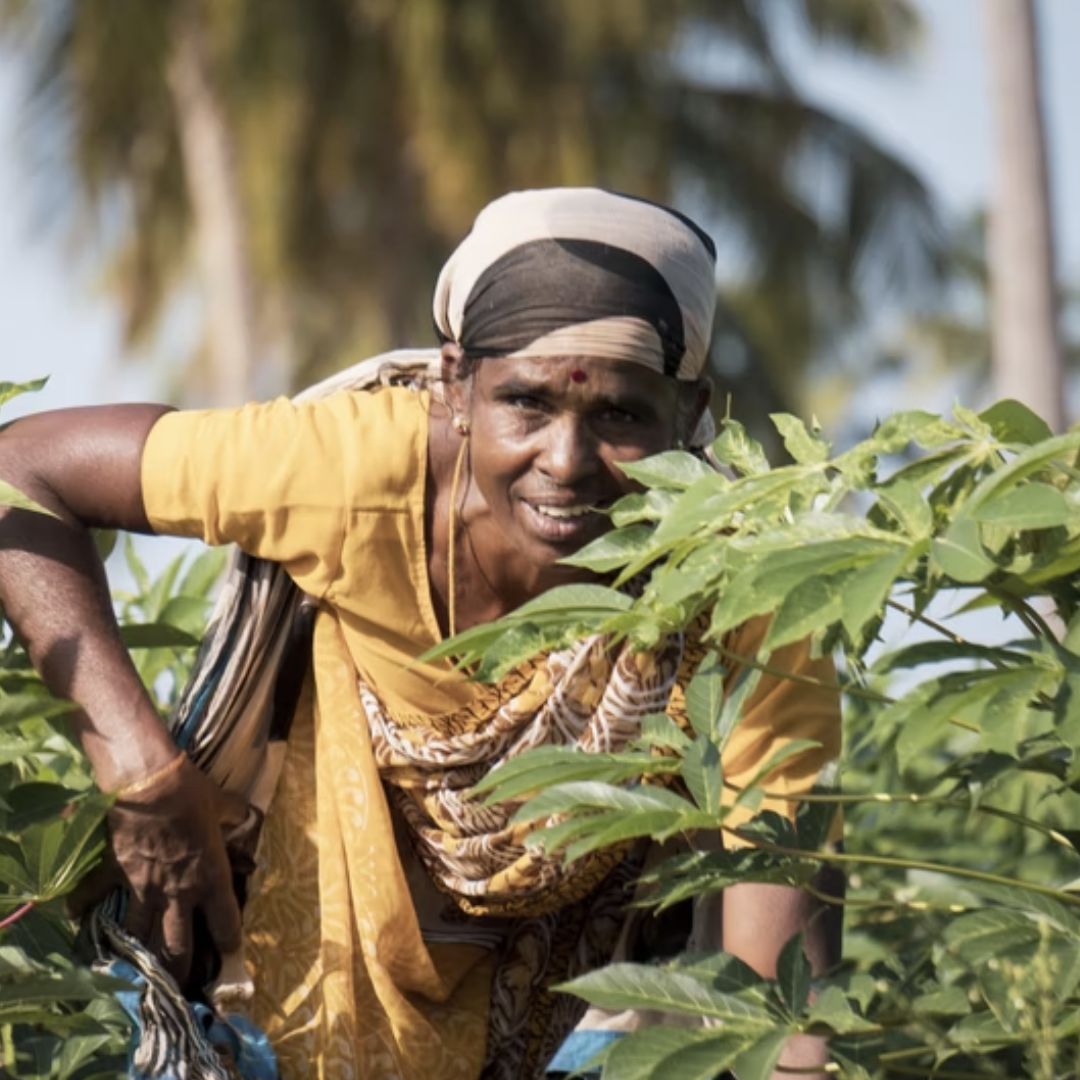
Image Credits: Unsplash
COVID Impact: Trillions At Stake In India As 90% Women Disappear From Workforce
Writer: Tashafi Nazir
For most people, journalism sounds hectic and chaotic. For her, it's a passion she has been chasing for years. With an extensive media background, Tashafi believes in putting efforts on presenting a simple incident in the most interesting way.
India, 3 Jun 2022 10:30 AM GMT
Editor : Shiva Chaudhary |
A post-graduate in Journalism and Mass Communication with relevant skills, specialising in content editing & writing. I believe in the precise dissemination of information based on facts to the public.
Creatives : Tashafi Nazir
For most people, journalism sounds hectic and chaotic. For her, it's a passion she has been chasing for years. With an extensive media background, Tashafi believes in putting efforts on presenting a simple incident in the most interesting way.
Failing to restore jobs for women could shave trillions of dollars off worldwide economic growth. The women labour force participation in India fell so sharply that it’s now in the same league as war-torn Yemen
For years, Sanchuri Bhuniya fought her parents' pleas to settle down. She wanted to travel and earn money, not become a homemaker.
In 2019, Bhuniya escaped from her isolated village in eastern India. She took a train hundreds of miles south to Bengaluru and found work in a garment factory earning over ₹9,000 per month. The job liberated her. "I ran away, and that's the only way I was able to go," she said.
That life of financial freedom ended shortly with the onset of COVID-19. In 2020, Prime Minister Narendra Modi declared a nationwide lockdown to control infections, shutting almost all businesses. Over 100 million Indians lost their jobs within a few weeks, including Bhuniya, who was forced to return to her hometown and never found another stable employer.
India's Women Labour Force Participation Fell Sharply
Economists warn of a troubling data point as the world climbs out of the pandemic. Failing to restore jobs for women, who have been less likely than men to return to the workforce, could shave trillions of dollars off worldwide economic growth. The forecast is notably less in developing countries like India, where women labour force participation fell so sharply that it's now in the same league as war-torn Yemen, Bloomberg reported.
According to data compiled by the World Bank, between 2010 and 2020, the number of working women in India decreased from 26 per cent to 19 per cent. As infections surged, and a bad situation turned severe, economists in Mumbai estimate that female employment plummeted to nine per cent by 2022.
This is disastrous news for India's economy, which had begun slowing before the pandemic. Over two-thirds of the country's 1.3 billion people live in rural areas. Despite the rapid economic expansion, women have struggled to transition to working in urban centres.
Closing the employment gap between men and women, a whopping 58 percentage points could expand India's GDP by close to a third by 2050. According to a recent analysis from Bloomberg Economics, that equates to nearly $6 trillion in constant US dollar terms. Though women in India represent 48 per cent of the population, they contribute only almost 17 per cent of GDP compared to 40 per cent in China.
Women More Likely To Lose Jobs During Pandemic
Globally, women were more likely than men to lose jobs during the COVID-19 pandemic, and their recovery has been slower. As per Bloomberg Economics, policy changes that address gender disparities and boost the number of working women improved access to education, child care, or flexible work arrangements. For example, it would help add about $20 trillion to global GDP by 2050.
For workers like 23-year-old Bhuniya, the pandemic had severe consequences. After becoming unemployed, she struggled to afford food in Bengaluru and eventually returned to her remote village, Patrapali, in Odisha. Bhuniya doesn't think she will have another opportunity to leave. She no longer earns a decent income, but her family is concerned about her safety as a single woman living in a distant city.
"If I run away again, my mother will curse me," she said. "Now, there's nothing left. My bank account is empty, and there's little work in the village."
Rosa Abraham, an economics professor at Bengaluru's Azim Premji University, tracked over 20,000 people as they navigated the labour market during the pandemic. After the first lockdown, she found that women were more likely to lose their jobs than men and less likely to recover work after the government lifted restrictions.
Increased domestic chores, lack of childcare options after school shutdowns, and a rise in marriages, which often confine women's autonomy in India, help explain the difference in the outcome.
"When men face this huge economic shock, they have a fallback option," Abraham said. "They can navigate to other kinds of work. But for women, there is no such option. They can't negotiate the labour market as effectively as men do."
Dreams of freedom or a well-paid job were replaced with "distress-led employment," essentially unpaid work on a family farm or taking care of the home. Before the pandemic, Indian women performed about 10 times more care work than men, around three times the global average.
"Unfortunately, the decision to work is often not in the hands of the woman herself," Abraham said.
The decline in workforce participation is partly about culture. As people in India became rich, families that could afford to keep females at home did so, thinking it conferred social status. On the other hand, those at the lowest rungs of society are still seen as potential earners. But they tend to work menial jobs far from the formal economy. In the official statistics, their labour is not counted.
Stigma Against Women
In many villages, patriarchal values remain irresistible, and a stigma against women persists. Though illegal, sex-selective abortions are still common.
Akhina Hansraj, senior program manager at Akshara Centre, a Mumbai-based organisation advocating for gender equity, said Indian men often think "it's not manly if their wife contributes to the family income."
"People believe if females get educated, they might become financially independent and may not obey and respect the family."
Marriage is a sticking point in a country like India, where most weddings are still arranged. After the first COVID induced lockdown in 2020, the country's leading matrimony websites reported a surge in new registrations. As per government data, marriages among children and young adults, many of them illegal under Indian law, rose by 80 per cent in some states.
Financial considerations often tipped the scales in favour of marriage. Social distancing and protocols against large gatherings meant parents could hold small and less-expensive ceremonies at home, rather than the common multi-day celebrations even in the poorest pockets of society. During the direst stretches of the COVID-19 pandemic, some families married off their daughters because they couldn't afford to feed another mouth.
When a woman marries in India, she typically shifts with her husband and in-laws. That can make it challenging to leave secluded villages where policing of choices is common, and employment opportunities are less.
In 2015, the government started a campaign called "Beti Bachao, Beti Padhao," which roughly means "Save Our Daughters, Teach Our Daughters." It's an initiative to keep girls in school and reduce sex-selective abortion. The BJP government has also tried to eradicate child marriage. In 2021, the administration passed a proposal to increase the legal marriage age for women from 18 to 21, which is what it is for men.
But in many villages, national laws are distant abstractions. Local traditions are still set and enforced by local panchayats. While the government's campaign to educate daughters received lots of publicity, recent audits revealed that much of the initiative's funds remained unspent.
Even in urban areas, where literacy rates are higher, and jobs are more abundant, the pressure on women is overwhelming.
Also Read: Way Towards Sustainability! Himalaya Commits To Plant 1 Million Trees Across India By 2023
 All section
All section














